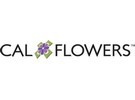Ask those who work in the floral industry, “why do people buy flowers?” and you will get numerous answers delivered with great confidence. Some of these answers may even be correct. However, we can’t be certain which ones are the real reasons consumers buy flowers. Turns out, asking consumers such a direct question will not reveal the most accurate answers.
by Michael LoBue
All consumers have unconscious reasons for just about anything they purchase, especially something as discretionary as flowers.
To answer the above question – “why do people buy flowers?” – CalFlowers commissioned a study by a consumer marketing research firm in 2018. The firm, Traction, is an award-winning consumer research and creative marketing firm. One of Traction’s qualifying characteristics for this research was that they had no prior experience with the floral industry, or with any horticulture segment for that matter. It was important to CalFlowers that we had “fresh eyes” looking into this important question. Among other considerations, it meant that their researchers would have to rely on rigorous survey techniques.
Goals and methodology
The Traction team set the following goals for their research:
- Enhance our understanding of functional and emotional drivers behind purchasing flowers,
- Identify ways to increase the number/quantity of flowers purchased by current customers primarily, and those who may not purchase flowers as often secondarily.
- Uncover the emotional connections buyers have to precut flowers.
- Identify how functional considerations (e.g., I need a gift…) lead to emotional and aspirational motivations (e.g., flowers send a special message other gift items may not possess) in buyers for purchasing or receiving precut flowers.
- Better understand the influences that cause consumers to buy cut flowers (e.g., functional, emotional, rational).
- Use the research results to best support creative and strategic work.
Traction then conducted their research via online and telephone interviews with 1,208 active and lapsed flower buyers.
Results
Using images to identify common functional and emotional perceptions of fresh-cut flowers, the team was able to reveal clusters of unconscious factors in consumers across three categories:
- Thinking about flowers;
- Giving flowers to others; and
- Buying flowers for oneself.

The results are segmented by age, gender and frequent vs. non-frequent buyers. While there are some key differences among these three factors, there’s more that unites consumers about their respective desires to buy flowers than separates them.
We are happy to provide any readers with the full results of the team’s research.
To me the most interesting and telling results were from the “response latency” measure that reveals both consumers’ connection to flowers and how strong that connection is relative to other motivations (e.g., exciting, romantic, calming, etc.). This measure also reveals whether the connection to flowers is conscious or subconscious. The more subconscious the connection, the stronger the connection and the more that connection is a good theme for a marketing campaign. Graph #1 below reveals that overall, flowers are implicitly viewed as being romantic and exciting.
In the graphs below, factors in the upper right quadrant measure both the relative strength and weight of unconscious connections associated with flowers.
When the responses of the two buying segments – active and lapsed flower buyers - were analyzed, we observed that lapsed flower buyers associate flowers with being romantic, whereas active flower buyers associate flowers with stronger feelings of excitement.
This research project revealed a great deal more than the two highlights featured above. So much more that CalFlowers commissioned a round of creative development by Traction, producing two strong advertising campaigns for the promotion of flowers during the non-holiday flower buying season.
CalFlowers is grateful to the following individuals who served on the client advisory team providing feedback over the course of the creative development cycle, and ultimately identifying the two top campaigns: “Flowers Always Good” and “Flower Time”.
- Jenny Sparks, SAF
- Eliana Alzaté, Asocolflores
- Professor Charles Hall, Texas A&M University
- Heidi Wernett, Ph.D. of China Horticulture Business Services, LLC
- Tanya Nemaric, 1800Flowers
For more information: CalFlowers
CalFlowers
Email: [email protected]
www.cafgs.org


